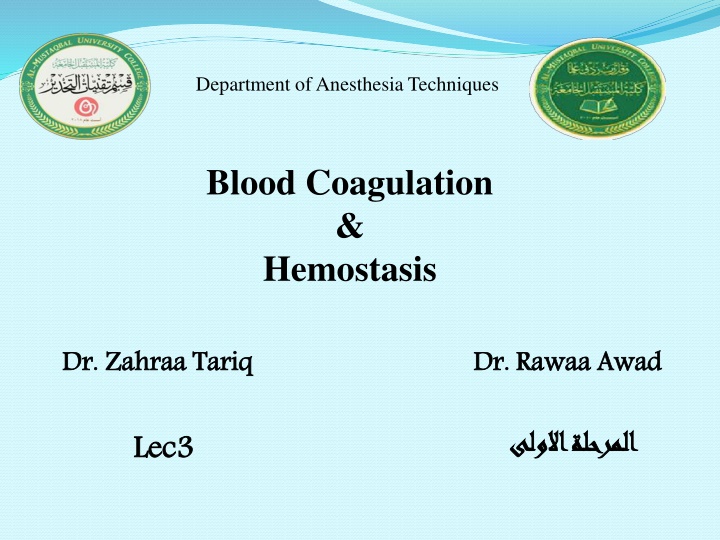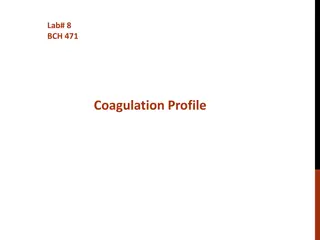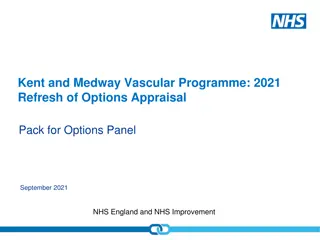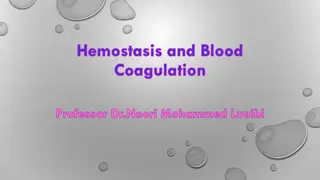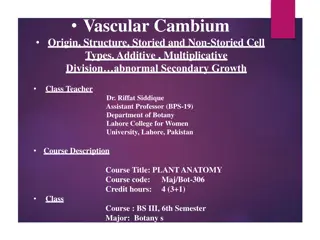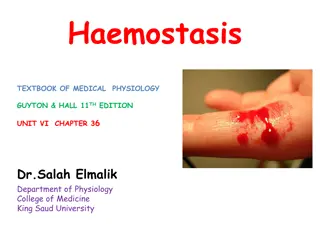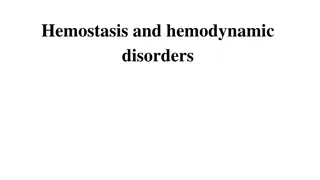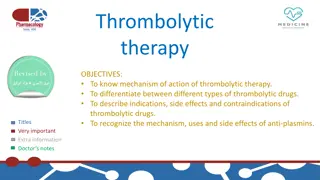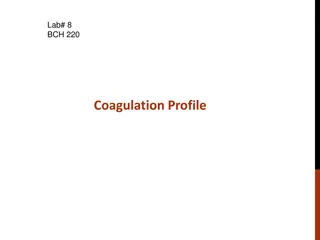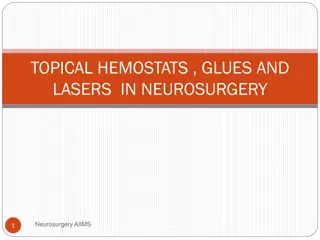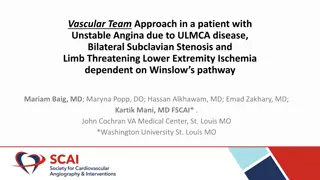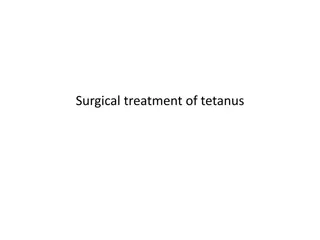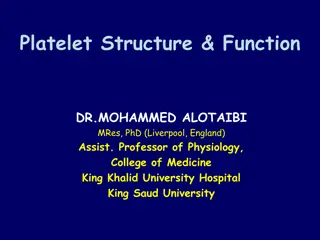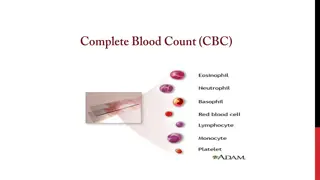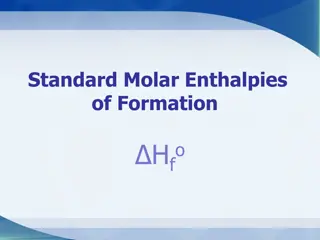Hemostasis Process Explained - Vascular Spasms to Blood Clot Formation
Hemostasis is the process of forming clots in injured blood vessels to prevent blood loss. It involves vascular spasms, platelet plug formation, and blood coagulation through clotting factors. Discover the steps and factors involved in hemostasis in detail.
Download Presentation

Please find below an Image/Link to download the presentation.
The content on the website is provided AS IS for your information and personal use only. It may not be sold, licensed, or shared on other websites without obtaining consent from the author.If you encounter any issues during the download, it is possible that the publisher has removed the file from their server.
You are allowed to download the files provided on this website for personal or commercial use, subject to the condition that they are used lawfully. All files are the property of their respective owners.
The content on the website is provided AS IS for your information and personal use only. It may not be sold, licensed, or shared on other websites without obtaining consent from the author.
E N D
Presentation Transcript
Department of Anesthesia Techniques Blood Coagulation & Hemostasis Dr. Dr. Zahraa Zahraa Tariq Tariq Dr. Dr. Rawaa Rawaa Awad Awad Lec Lec3 3
Hemostasis Hemostasis is the process of forming clots in the wall of an injured blood vessel and preventing blood loss. The Steps of Hemostasis 1. Vascular spasms (vasoconstriction at injured site). 2. Platelet plug formation (plugging the wound). 3. Formation of a blood clot (blood coagulation). 4. Growth of fibrous tissue into the blood clot to close the hole in the vessel permanently.
Vascular Spasms: Vasoconstriction is the first reaction to vascular damage, reduces blood flow from the site of injury and it is mediated by: a) Sympathetic reflex. b) Released chemicals by traumatized tissues and blood platelets. The spasm can last for many minutes to hours.
Formation of the Platelet Plug After damage to endothelium of vessel: 1) Platelets adhere to the collagen of the injured vessel (enhanced by Von Willebrand factor) and become activated. 2) Activated platelets release ADP and thromboxane A2, that activate the surrounding platelets and causing platelet plug formation. Von Willebrand Factor: is a glycoprotein made by bone marrow and endothelial cells, it functions as a bridge between platelet and collagen fibrils of damaged tissue
3. Formation of a blood clot (blood coagulation) Coagulation of blood occur through a series of reaction due to activation of a group of substance called clotting factors
Clotting Factor 1.Factor I - Fibrinogen 2. Factor II - Prothrombin 3. Factor III - Tissue Factor. 4. Factor IV - Ionized Calcium ( Ca++ ) 5. Factor V - Labile Factor 6. Factor VI - Unassigned 7. Factor VII - Stable Factor 8. Factor VIII -Antihemophilic Factor 9. Factor IX Christmas Factor 10. Factor X - Stuart-prower Factor 11. Factor XI - Plasma ThromboplastinAntecedent 12. Factor XII - Hageman Factor 13. Factor XIII - Fibrin-stabilizing Factor
Coagulation (blood clotting) Coagulation is the loss of fluid content in the blood, resulting in a jelly-like substance. It is occur through a series of reactions: 1. Formation of Prothrombin Activator 2. Conversion of Prothrombin To Thrombin. 3. Conversion of Fibrinogen To Fibrin
Prothrombin Activators: are a group of substances which convert prothrombin to thrombin in two ways: 1. Extrinsic Pathway: (the main pathway to initiate coagulation) The process is started when injured endothelial cells produce tissue factor (factor III), which activates factor VII. 2. Intrinsic Pathway: (which promotes coagulation) involves the activation of factors XII, XI, IX, and factor VIII. The prothrombin activator converts prothrombin to thrombin in the presence of enough ionic Ca++ from platelets.
Blood Clot : is composed of a meshwork of fibrin fibers running in all directions and entrapping blood cells, platelets, and plasma. The fibrin fibers also adhere to damaged surfaces of blood vessels; therefore, the blood clot becomes adherent to any vascular opening and thereby prevents further blood loss
